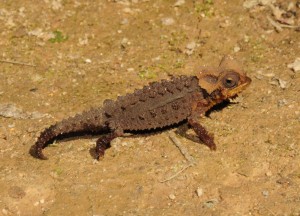Tsingy de Bemaraha:
Mitsingytsingyna is the Malagasy term for “walking on tiptoe” and gives its name to the needle-pointed rocks that make up the National Park.

Location:
Tsingy de Bemaraha National Park is located in western Madagascar in the Melaky region. It is about 250 km north of Morondava, from where taxis run to the National Park. However, an off-road vehicle is recommended for the long off-road route – not only for comfort but also for safety and driving length. If the weather is good you should plan a whole day’s drive from Morondava to the Tsingy de Bemaraha, and at least one additional day for the tour from the capital Antananarivo to Morondava. In Bekopaka, shortly before reaching the National Park, a small river has to be crossed by an adventurous ferry, which only runs until 6 pm. There is no RN there. The route is basically only open from the beginning of May to November, i.e. during the dry season. In the rainy season, the park is not accessible and therefore practically closed. There are regular flights between the capital Antananarivo and Morondava.
Information about the national park:

The Tsingy de Bemaraha National Park measures around 1527 km² and is famous for its Tsingys. Already in 1990, the area became a UNESCO World Natural Heritage Site, only in 1997 was officially declared a National Park of Madagascar. At the Manambolo directly at the national park, there are graves of the Vazimba, which are considered fady. There are several hiking routes in the National Park, of which the following two are the most visited: The easiest way is the circular route to the small Tsingys, which takes about three hours and can already be described as a demanding hike. A hike including via ferrata with rope protection for every traveler, suspension bridges, and narrow caves is the tour to the big Tsingys, for which one should be in good health condition. The view over the Tsingys rewards you for every effort. The needle stone rocks, up to 30 m high and pointed, are an impressive, unique natural spectacle. Below them runs an intricate cave system with mangrove forests and even small lakes.
Climate:
The national park consists not only of the striking limestone formations but also of extensive dry forests with a hot, dry climate. Only deep between the Tsingys, there are humid climatic conditions so that sometimes even small lakes and mangrove forests can be found in the gorges. The average day temperatures on the karst plateaus, however, are a good 35°C, and often temperatures rise significantly higher. Even at night, the air does not cool below 20°C. Water bottles and sun protection must be included in your day luggage!
Infrastructure:
The infrastructure around the national park is excellent by Madagascan standards. Directly on the edge of the Tsingys in Bekopaka, there are several very well equipped hotels, which are relatively expensive according to their comfort and the arduous transport of beverages, food, and everyday objects there. Several smaller restaurants and bars, as well as some smaller shops, can also be found on site. If you prefer a bit simpler accommodation, you can camp on the other side of the river (before the ferry) on a rustic campground. Originally the Tsingys de Bemaraha were the home of the Vazimba, but today the people exist only in legends. The area is mainly inhabited by Sakalava, the majority of whom live from agriculture.

Fauna & Flora:
As in almost all national parks in Madagascar, over 85% of the fauna and flora in the Tsingys de Bemaraha is endemic. Around 650 different plant species find a home here. Succulents such as the famous bottle trees or beautiful orchids can be admired throughout the park. In addition, there is an unbelievable variety of animals, which one would not expect at first glance in such a region. Besides Madagascar’s largest predator, the Fossa, Van-Decken-Sifakas, bamboo lemurs, red-fronted and mouse lemurs, and many other lives in the national park. The animals adapt perfectly to their environment and can sometimes even jump around between the razor-sharp stones. Almost 100 different bird species can be observed within the park, including the very rare Madagascar Fish Eagle (Ankoay or Icthyophaga vociferoides), the Giant Coua (Coua gigas) and the Long-Eared Owl (Asio madagascariensis).

In the caves and rock formations live about 15 species of bats, which can be seen from time to time also during the day. Reptile lovers will not miss out in the Tsingy de Bemaraha either: With over 60 species, reptiles are well represented alongside some amphibian species. The rare Madagascan big-headed turtles (Erymnochelys madagascariensis) live exclusively in this region. They can only be found with a lot of luck, just like the also rare and only here living leaf chameleon Brookesia perarmata.
With the usual heat in the Tsingys, exploring the national park is certainly an exhausting task – but it is definitely worthwhile for the varied, fantastic experiences!
 MADAMAGAZINE Your Magazine about Madagascar
MADAMAGAZINE Your Magazine about Madagascar









